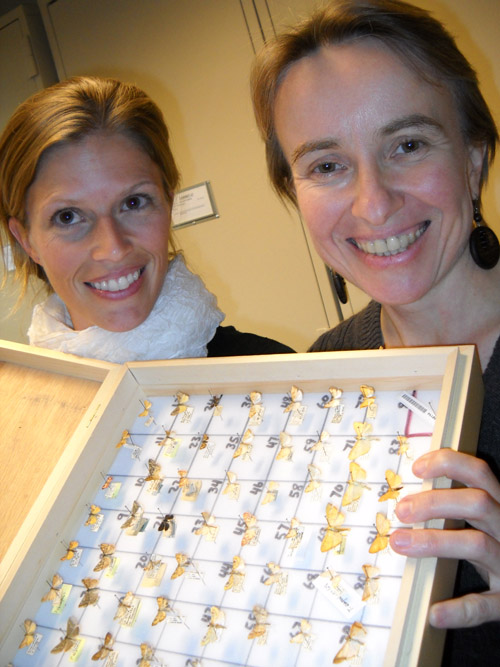Elephants. Rhinos. The big cats. They’re the creatures most people hope to see on a South African safari. But Erin Corstorphine, a research assistant with U of G’s Biodiversity Institute of Ontario (BIO), considered herself lucky during her trek there this fall when she spotted a flightless dung beetle trundling along, digging a burrow as dung beetles do.
Call it a safari of the small and obscure – but one with the bigger goal of helping to preserve the planet’s biodiversity through DNA barcoding.
Hunting down insects and other invertebrates was partly the purpose of Corstorphine’s trek around the Western Cape region in late September. With her among South African scientists aboard a convoy of 10 pickups was U of G post-doc Maria “Masha” Kuzmina, a BIO botanist gathering plant specimens on the expedition.
Bumping along dirt roads and tracks skirting the Atlantic coastline, the team collected thousands of specimens of animals and plants during the 17-day trek. “We took representatives of any insect and spider species we could find,” says Corstorphine, referring to the beetles, grasshoppers, ants and termites they collected.
Kuzmina’s “dung-beetle moment” came the day she found a carnivorous sundew plant, a South African variant that she found much more impressive than its diminutive Ontario counterpart. Recalling the expedition through two of the country’s biodiversity hotpots, she says, “For me, it was a unique experience. It’s the ‘Holy Land’ for botanists.”
Back at Guelph, all of those specimens will eventually be identified using a signature bit of their genetic material. Ultimately, they’ll be added to a growing DNA barcode database intended to catalogue every species on the planet.
That endeavour began here at Guelph in 2003 with integrative biology professor Paul Hebert, inventor of DNA barcoding. Earlier this fall, he and other scientists launched the International Barcode of Life project meant to produce barcode records for plants and animals around the world.
South Africa plans to barcode 20,000 specimens by next spring and another 40,000 specimens by 2013, says Corstorphine. This year, the two-time U of G grad became the project co-ordinator for barcoding projects in South Africa, funded by the Canadian International Development Research Centre (IDRC).
This fall’s trek was called the Toyota Enviro Outreach, with Toyota providing the trucks that carried the researchers through two of the world’s 34 biodiversity hotspots. The group was led by guides from the Klipbokkop Nature Reserve, about 100 kilometres inland from Cape Town.
They travelled through the Cape Floristic region, dominated by shrubby fynbos (Afrikaans for “fine bush”) plants. They also visited the Succulent Karoo region, which runs northward along the Atlantic coast into Namibia. In this arid ecosystem, dwarf shrubs survive by storing water in their fleshy leaves.
Says Corstorphine: “The landscape looked so barren, yet when you got close to everything, there was this remarkable diversity.”
For her, the trek was partly administrative, as she met researchers at the University of Johannesburg and with South Africa’s parks system.
The trip also marked the International Year of Biodiversity. South Africa’s biodiversity is the fifth highest in the world. Using the IDRC funding, researchers there plan to barcode plants, insects, invasive species, fish and mammals.
In Guelph, Corstorphine will lead the hands-on analysis to barcode specimens collected in South Africa. As in other parts of the world, she says, barcoding may help control pests and invasive organisms, curb the illegal trade of endangered species and help protect biodiversity.
She joined the BIO in 2007 and studied marine invertebrates with Hebert for her master’s degree, completed this past spring.
Kuzmina completed her M.Sc. at St. Petersburg State University and her PhD at the Komarov Botanical Institute, part of the Russian Academy of Sciences. After working at the University of Toronto, she joined Guelph in 2008.
